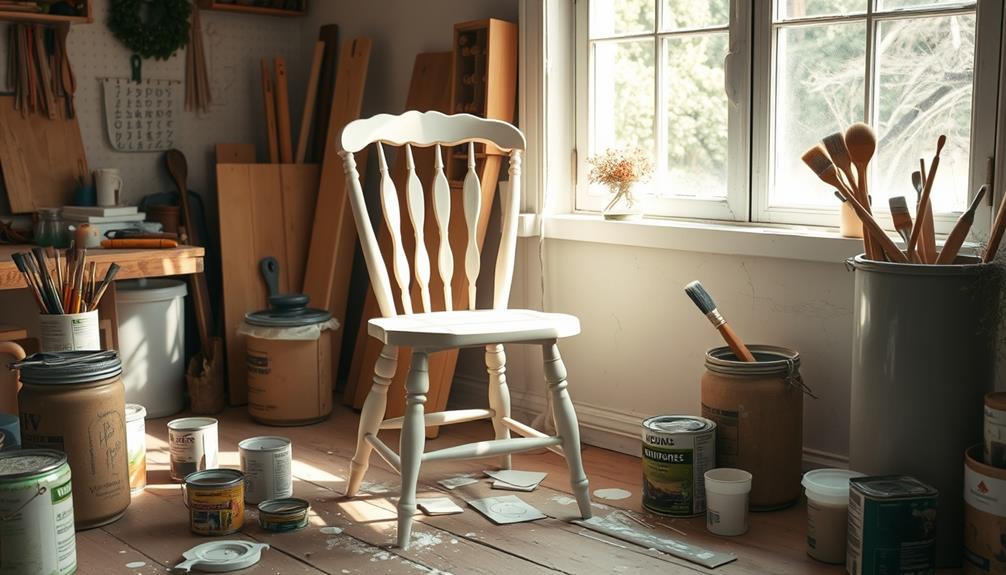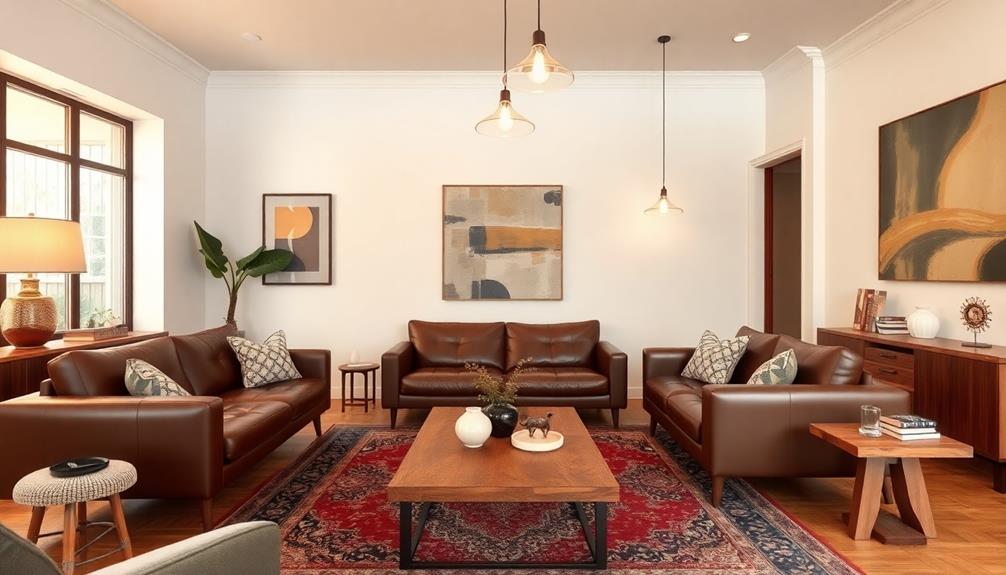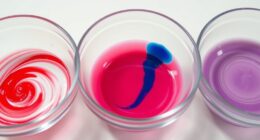To discover your ideal nautical color palette, start by choosing a dominant color like calming blue or crisp white to set the mood. Think about incorporating complementary hues such as sandy beige or rich navy for balance. These colors not only evoke the ocean's spirit but also create a serene atmosphere. Don't forget about patterns and textures—classic stripes and natural materials can enhance your theme. Mix warm and cool tones to keep it interesting while ensuring everything works harmoniously. Exploring these elements will lead you to a palette that transforms your space into a welcoming nautical retreat. There's much more to explore!
Key Takeaways
- Start with a dominant color, like navy or teal, to anchor your nautical palette.
- Use the color wheel to identify complementary hues that enhance your chosen dominant color.
- Incorporate oceanic shades such as calming blues and crisp whites for a serene atmosphere.
- Mix textures and patterns, including stripes and natural materials, to add visual interest.
- Test paint samples in different lighting to ensure your colors create the desired ambiance.
Understanding Color Theory

When diving into the world of nautical design, understanding color theory is essential for crafting a cohesive palette.
You'll want to familiarize yourself with the color wheel, as it helps you identify complementary colors that enhance each other. Recognizing key concepts like primary, secondary, and tertiary colors is vital for achieving harmony in your design.
Explore hidden meanings behind colors, as they can influence your overall theme. For instance, cool blues evoke the essence of the sea, while crisp whites add a fresh touch.
By grasping these principles, you can select colors that not only look good together but also create the intended ambiance in your space.
Start with a dominant color and build your palette from there.
Emotional Effects of Colors
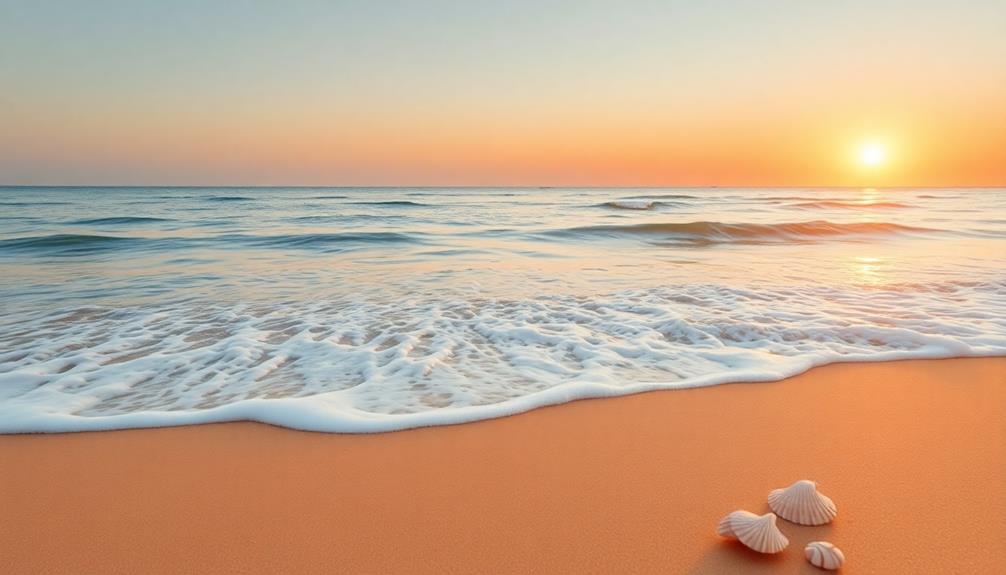
Colors regularly evoke emotions, influencing how you feel in a space. Understanding the emotional effects of colors can help you craft a soothing nautical atmosphere. Here's a quick guide to some key colors and their emotional impacts:
| Color | Emotional Effect |
|---|---|
| Blue | Calmness and tranquility |
| White | Purity and cleanliness |
| Yellow | Vibrancy and optimism |
| Green | Nature and rejuvenation |
| Red | Boldness and excitement |
Elements of Nautical Design
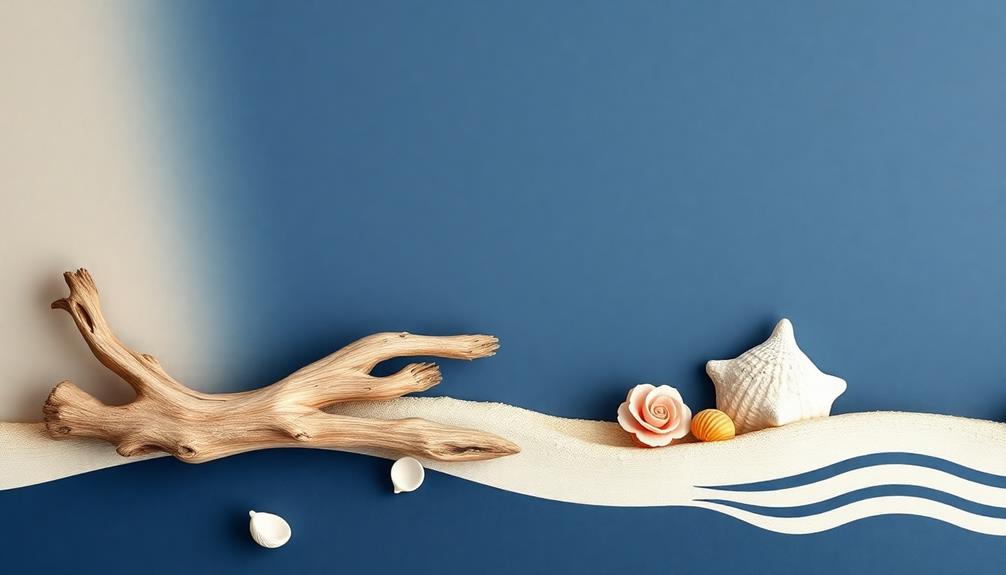
Understanding the emotional effects of colors sets a solid foundation for incorporating key elements of nautical design. Start by choosing oceanic hues that evoke the serenity of the sea, like calming blues and crisp whites.
Use nautical symbols like anchors and compasses to reinforce the theme, inviting a sense of adventure into your space. Maritime patterns, such as stripes and ropes, add visual interest and create cohesion.
Additionally, consider incorporating natural materials like weathered wood and seashells, which bring a touch of authenticity. These elements not only enhance your design but also connect you to the maritime world, allowing you to create a welcoming atmosphere that reflects your nautical vision.
Embrace these components to bring your nautical dream to life!
Choosing Complementary Colors

To create a visually appealing nautical color palette, it's essential to choose complementary colors that enhance your design's overall impact.
Start by selecting a dominant color, like a soothing blue or crisp white, as your foundation. Next, use the color wheel to find hues that balance and elevate your primary choice.
For example, pair navy blue with soft beige to evoke a sense of calmness, or combine rich teal with warm coral for a vibrant contrast.
Remember, complementary colors shouldn't compete but rather work together to create a cohesive look.
Don't forget to contemplate the emotional impact of your colors, ensuring they resonate with the nautical theme while fostering the desired atmosphere in your space.
Achieving Visual Harmony
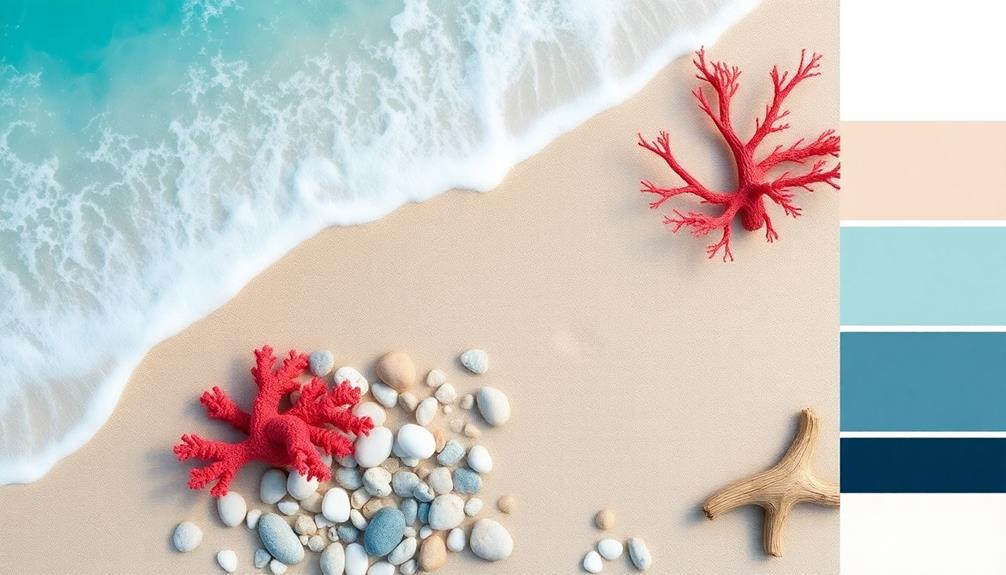
When designing a nautical space, achieving visual harmony is essential for creating an inviting atmosphere.
You'll want to balance your color choices carefully to evoke the right emotions and maintain cohesiveness. Follow these guidelines to guarantee harmony in your design:
- Choose a Dominant Color: Start with a cool blue or crisp white as your base.
- Incorporate Complementary Hues: Add accents like sandy beige or rich navy for depth.
- Balance Warm and Cool Tones: Mix calming colors with more energizing shades, like yellow.
- Create a Cohesive Experience: Ensure all colors work together throughout the space to promote tranquility.
Patterns and Textures in Design
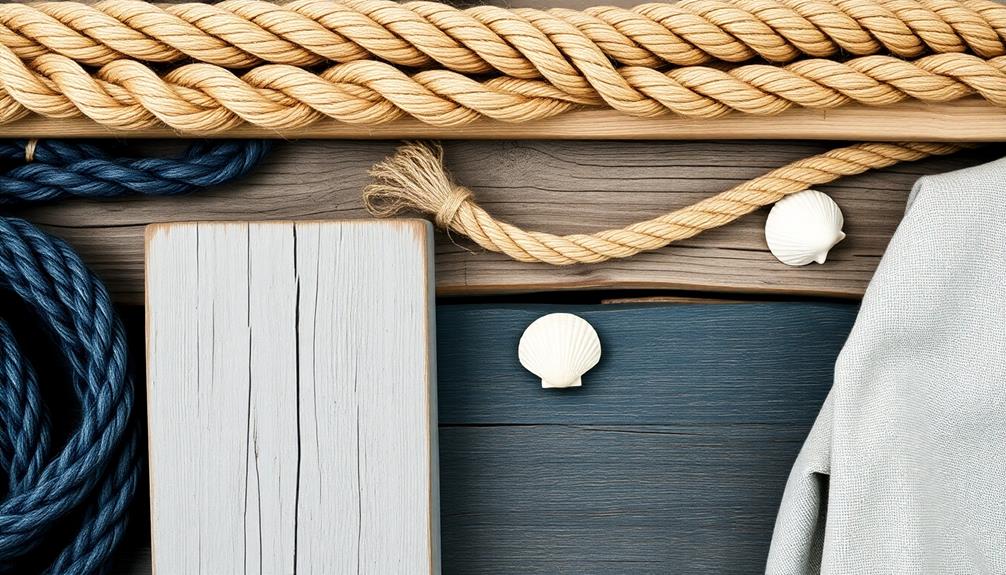
Achieving visual harmony sets the stage for incorporating patterns and textures that enhance your nautical design. Layering different textures, like woven fabrics and smooth woods, invites a tactile experience that reflects the ocean's allure.
You might consider using classic stripes or ocean motifs in your textiles to create cohesion throughout your space. Textured materials, such as a jute rug or a weathered wooden coffee table, add depth and warmth to the overall aesthetic.
Don't shy away from mixing patterns, but make certain they complement your chosen color palette. By thoughtfully blending these elements, you'll create a dynamic and inviting atmosphere that embodies the spirit of the sea, making your space feel both invigorating and stylish.
Finalizing Your Color Scheme
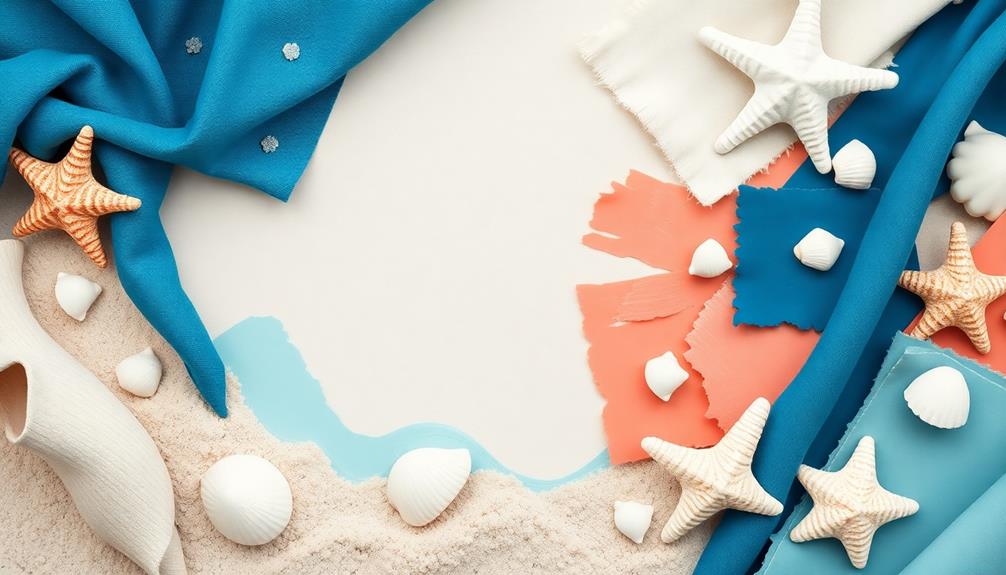
Finalizing your nautical color scheme is essential for achieving the desired ambiance in your space.
To guarantee your colors work harmoniously, follow these steps:
- Test Samples: Paint swatches on your walls to see how they look in different lighting.
- Select a Dominant Color: Choose a color like navy or teal to anchor your palette.
- Incorporate Accents: Add pops of white or sandy beige to enhance crispness and warmth.
- Ensure Cohesion: Make sure all colors complement each other, creating a balanced look.
Frequently Asked Questions
What Tools Can Help Visualize My Nautical Color Palette?
To visualize your nautical color palette, use digital design tools like Adobe Color or Canva. You can experiment with color wheels, create mood boards, and test different combinations to find what resonates best with you.
How Do I Incorporate Nautical Colors in a Small Space?
In a small space, think of waves gently lapping at the shore. Use soft blues and crisp whites to create an airy feel. Accent with nautical decor, keeping it light to avoid overwhelming the room.
Can I Mix Nautical Colors With Other Design Themes?
Yes, you can mix nautical colors with other design themes! Just guarantee the colors complement each other. Use textures and patterns to create harmony, keeping your overall aesthetic cohesive and visually appealing for your space.
What Are the Best Finishes for Nautical-Themed Colors?
Imagine the shimmering sea under a sunset; for nautical-themed colors, opt for matte finishes for calmness, glossy for vibrancy, and textured surfaces to add depth, creating a harmonious and inviting atmosphere in your space.
How Often Should I Update My Nautical Color Scheme?
You should update your nautical color scheme every few years or when you feel an urge for change. Freshening up your palette keeps the space feeling vibrant and inviting while reflecting your evolving style.
Conclusion
As you finalize your nautical color palette, imagine soft waves lapping at the shore, their deep blues mingling with crisp whites like billowing sails. Picture your space transformed into a serene retreat, where gentle hues invite relaxation and coastal charm. With each carefully chosen shade, you'll evoke the tranquility of the sea, creating an inviting ambiance that feels both invigorating and timeless. Embrace the beauty of your design, and let the spirit of coastal living wash over your home. Incorporate natural textures like weathered wood or rattan to further enhance the seaside allure, grounding your design in organic warmth. As you revel in this tranquil oasis, you’ll find inspiration that extends beyond your home—perhaps even influencing your personal style to dress chic on a river cruise, embodying effortless elegance. Let every detail, from airy linens to nautical accents, reflect the harmony and charm of life by the water.



